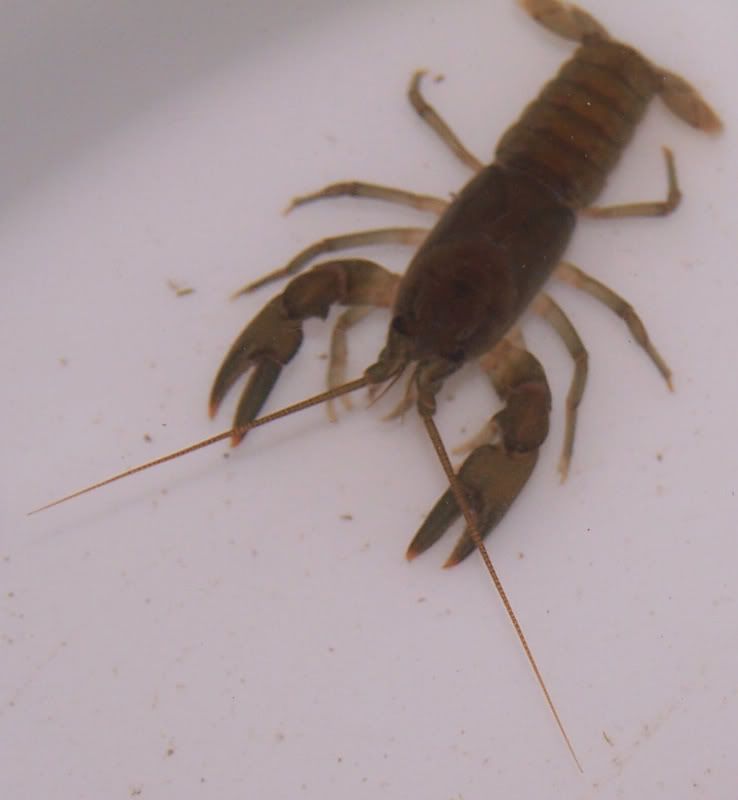
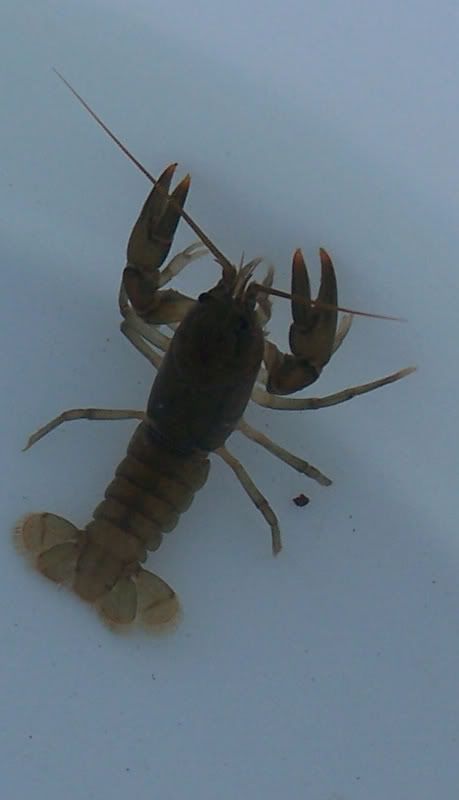
Posted 07 April 2008 - 06:29 AM


Posted 07 April 2008 - 06:42 AM
Here are a few pictures of a cray that I caught yesterday. I caught a few that looked to all be of the same species. These were all under rocks in the stream I was searching in. I caught them in extreme northern Pennsylvania right by the New York border in Mckean county. I'm very new at ID'ing crays and this is my first attempt. I know pictures from underneath the crays seems to be helpful, but I wasn't able to get any good pictures. I did get a few pictures from above and from my research I'm guessing that these are Orconectes Propinquus, if anybody could give a positive ID it would be great. They don't look it in these pictures, but their color is a blueish gray color.
Posted 07 April 2008 - 07:18 AM
Posted 07 April 2008 - 08:41 AM
Posted 07 April 2008 - 11:28 AM
I don't know...if you look at the first picture you can sort of see the Orconectes rostrum. The areola is awfully wide for virilis though. Check this out for a decent list of species you could work from.NY Decapods
Only a few cambarids to choose from but the pictures would need to be a little better quality or show reproductive organs. I've never seen propinquous but it's part of a larger complex,sanbornii, limosus, rusticus, etc. that is pretty easily identifiable.
Posted 07 April 2008 - 12:09 PM
Posted 07 April 2008 - 12:17 PM
Posted 07 April 2008 - 12:23 PM
Wait...orconectid? Is there a family Orconectidae now? I can't keep up with this stuff.
Posted 07 April 2008 - 12:50 PM
Wait...orconectid? Is there a family Orconectidae now? I can't keep up with this stuff.
Posted 07 April 2008 - 01:05 PM
Posted 09 April 2008 - 11:15 PM
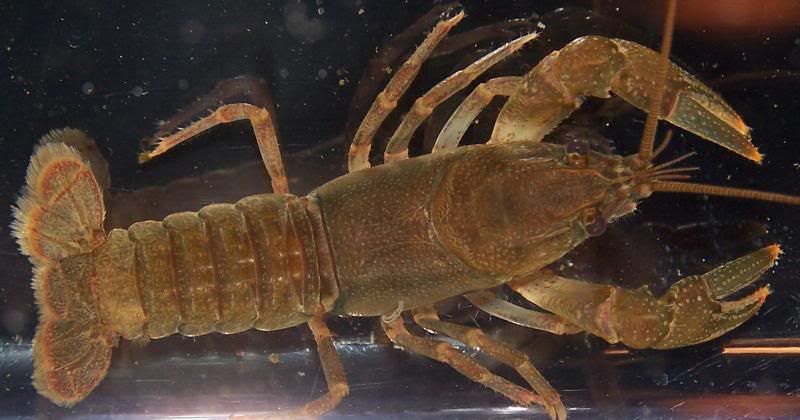
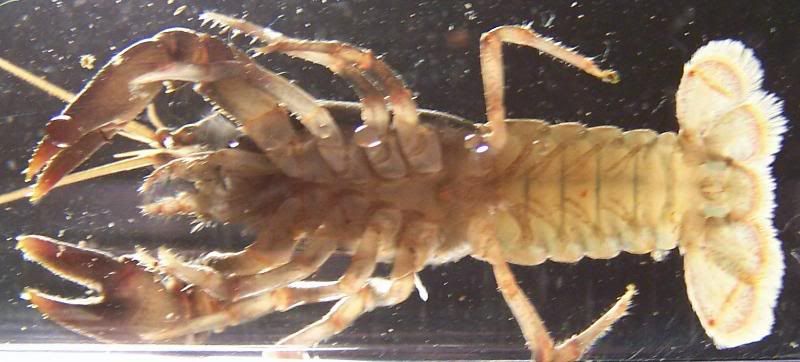
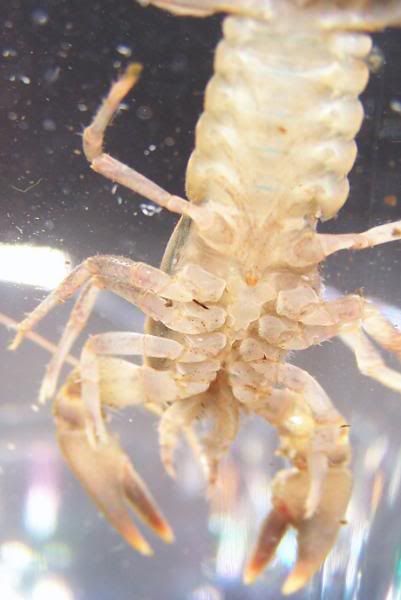
Posted 09 April 2008 - 11:55 PM
Edited by fishlvr, 10 April 2008 - 12:03 AM.
Posted 10 April 2008 - 07:53 AM
Looks a lot like my Cambarus (Depressicambarus) latimanus, but I don't think that's what they are, since it doesn't look like they live in NY.
Posted 16 April 2008 - 10:03 PM
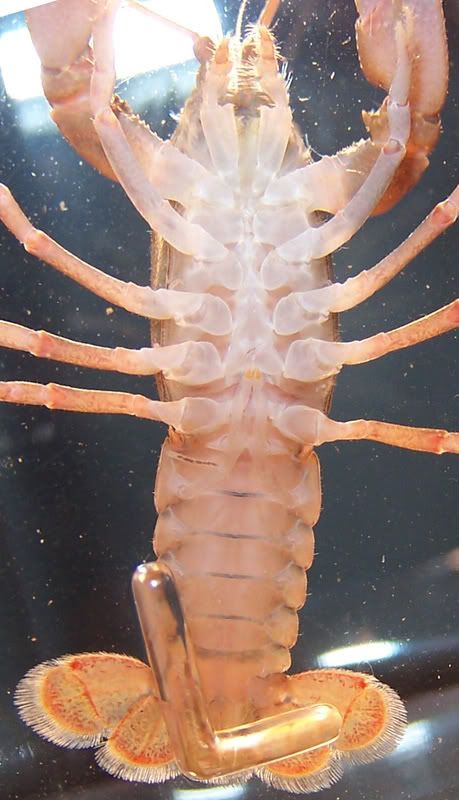
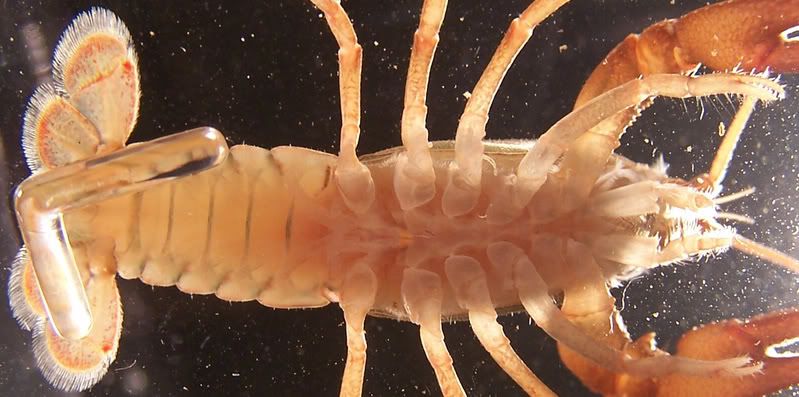
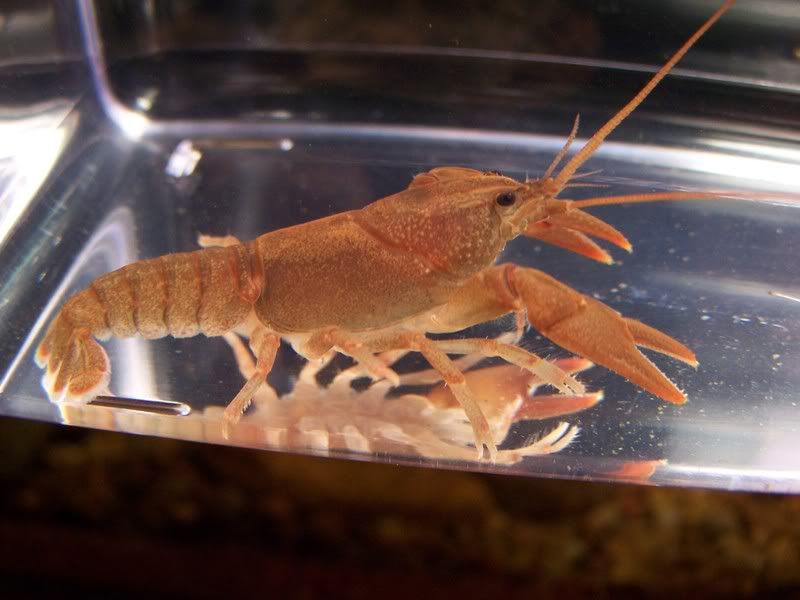
Posted 17 April 2008 - 09:49 AM
Posted 17 April 2008 - 10:40 AM
Posted 19 April 2008 - 07:40 AM
It looks like I finally was able to get a positive ID on this with these new pictures from a crayfish forum. It is a male Cambarus (Cambarus) Bartonii. Thanks for the helping me trying to figure out what it is. This is the first cray I have ever tried to ID so I'm still pretty clueless
Posted 20 April 2008 - 06:32 AM
It looks like I finally was able to get a positive ID on this with these new pictures from a crayfish forum. It is a male Cambarus (Cambarus) Bartonii. Thanks for the helping me trying to figure out what it is. This is the first cray I have ever tried to ID so I'm still pretty clueless
Posted 20 April 2008 - 11:01 AM
Posted 21 April 2008 - 12:05 AM


0 members, 0 guests, 0 anonymous users